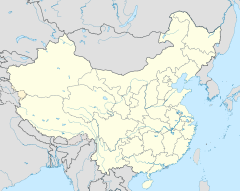Shifang protest
| Shifang protest | |||
|---|---|---|---|
| Date | 1 July 2012–3 July 2012 | ||
| Location |
Shifang, Sichuan province People's Republic of China 31°20′N 104°12′E / 31.333°N 104.200°ECoordinates: 31°20′N 104°12′E / 31.333°N 104.200°E |
||
| Goals | Suspension of the Sichuan Hongda Co. copper smelting plant | ||
| Parties to the civil conflict | |||
|
|||
The Shifang protest was a large-scale environmental protest in the southwestern Chinese city of Shifang, Sichuan province, against a copper plant that residents feared posed environmental and public health risks. The protests spanned 1–3 July 2012, and drew thousands of participants. Police were dispatched to break up the demonstrations, and reportedly shot tear gas and stun grenades into the crowd. Chinese authorities said some protesters has stormed a government building and smashed vehicles. Images and video of the protest circulated on the microblogs and social networking websites throughout China, some showing the protesters—many of them students—badly beaten. The protests ended late on 3 July when the local government announced that it had terminated construction of the metals plant and released all but six protesters who had been taken into custody.
The protest was notable for its size and the composition of its participants, as well as for its success in derailing the copper plant project. It was one of a growing number of large-scale environmental protests in China that achieved success.
The Shifang city area was among the most severely impacted by the 2008 Sichuan earthquake, suffering heavy loss of life and major damage to infrastructure. The centerpiece of the city's economic revitalization efforts was to be the Sichuan Hongda Co.'s copper smelting plant. The plant was to be one of the largest in the world, and its construction was intended to spur economic growth through the creation of thousands of jobs. China's Ministry of Environmental Protection said the $1.7 billion plant would refine 40,000 tons of molybdenum and 400,000 tons of copper annually.
Copper smelting and refining processes can produce a variety of toxic byproducts, including mercury, sulphur dioxide, and arsenic. Residents feared these pollutants would seep into the city's air and water supply. Critics further charged that the government had not been transparent in reviewing or disclosing information on the plant's potential environmental impact. Ma Jun, director of the Institute of Public and Environmental Affairs, told The Guardian that the government "only released the short version of the plant's environmental report, which did not have information about the solid waste and waste water." Ma added: "Heavy metal projects are always highly polluting. Of course the public has concerns about this." Residents of the city had reportedly filed petitions against the project, but authorities took no action. Reuters reported that although many local residents supported the efforts to create jobs, they were upset by the government's lack of consultation with the public and failure to adequately address environmental concerns.
...
Wikipedia

